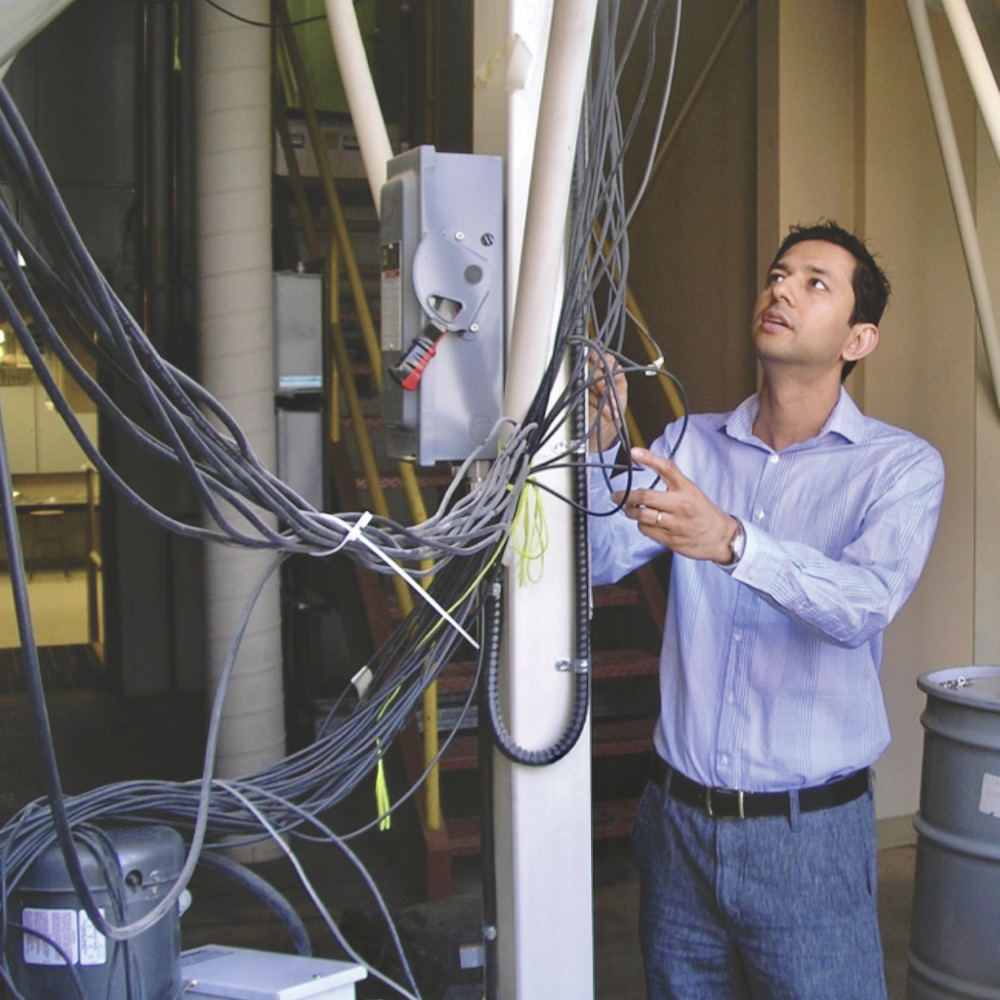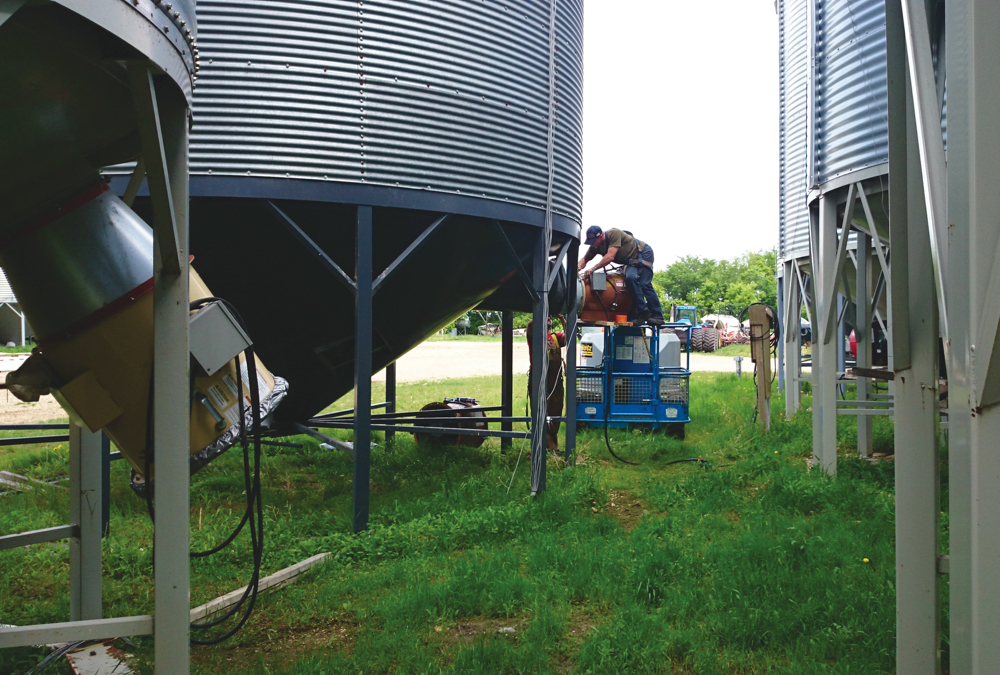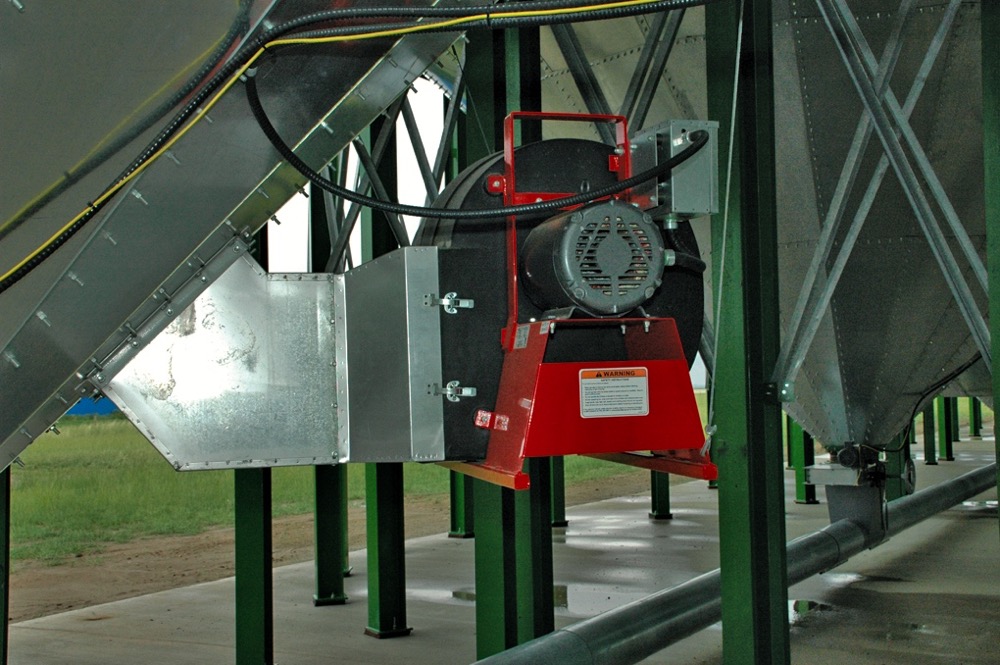Coring grain bins, a common practice in the U.S. corn and soybean area, is also being tried by some Canadian growers as part of their grain storage strategy.
Coring involves removing grain from the centre of the bin after the initial fill, which removes the fines that accumulate within the centre during loading. Some say coring increases aeration uniformity and reduces risk of grain spoilage. According to Rick Baldwin, president of Winnipeg-based 4 Pecks Grain Storage and Handling, a high density of fines in the centre of a bin can restrict airflow and reduce the ability to dry grain after harvest. But he says the biggest issue with bins not being cored is that a crust or lumps form in the centre and on top of the grain that’s pulled down when unloading, which can plug the centre sump.
Brent Elliott, infestation control and sanitation program manager at the Canadian Grain Commission, says much more segregation between fines and grain (and the central accumulation of fines in the core of a bin) happens with large kernels such as corn rather than with smaller seeds such as wheat, barley, oats and canola.
Read Also

Producers aren’t panicking over tariffs and trade threats
The influence of tariff and trade uncertainity on farm business decisions.
“In Western Canada, fines are generally comprised of dockage and weed seeds, and given that fines aren’t nearly as much of an issue in our commodities as they are in the larger grains such as corn, the number of farmers here using coring is probably pretty low. We haven’t been recommending coring of grain to this point. The general recommendation for cereal grains in Canada has always been to level the grain in the bin at the top and to use aeration to help mitigate buildup of moisture.”

But he adds that coring could help make grain temperatures more uniform throughout the bin. Because grain is an excellent insulator, even in the coldest months of the year the core of the grain can be considerably warmer than the outside of the bins, which can create problems in several ways.
“But our traditional recommendation has always been to use aeration to create an even distribution of moisture and temperature within the bin,” Elliott says. “Monitoring throughout the storage season is very useful for detecting buildup of temperature hot spots, CO2 and moisture. When that is detected, the preferred recommendation remains aeration if it is available as an option.”
Elliott urges growers to remember hot spots or other issues can occur outside the core of the grain as well, and coring won’t necessarily resolve those problems. “There’s nothing wrong with coring but we generally do not find it necessary for western Canadian grain farmers at this point,” he says. “Canadian farmers have a substantial advantage of being able to make use of the cold weather and aeration to manage their storage situations.”
Preventative measure
However, Baldwin recommends coring bins right after filling the bin as a preventative measure. For large flat-bottom bins, he suggests removing enough grain until the height at the top of the bin is replaced by a slight depression where the grain level is simply below the stored grain at the wall. “I think those that are coring are doing it correctly,” Baldwin says. “Sometimes bin space can be an issue and a reason why some bins don’t get cored — there’s not an empty bin to put the cored grain into.”
Like Elliott, Baldwin recommends using temperature and moisture cables to monitor the grain over time. If you see bin temperatures increasing, he advises removing a load right away to see what’s happening.
“If you don’t have cables, sometimes there are visual clues. For example, if there is a row of four bins and only three have snow on them, I would check the bin without snow. It can be a sign that the bin is getting warm. Also, checking from the top of the bin can give you an indication if there is a problem. You may see sprouted grain on top or you can smell mouldy grain.”
Elliott says those with bin cables should verify the data a few times throughout the season, as problems can go undetected due to faulty cables not reporting properly.

Unloading time
To prevent plugging at unloading, Baldwin says growers can install ‘clump busters’ that go over the centre sump. He also recommends doing a visual inspection from the top before unloading. If there is a lot of crusting or lumps, you can remove them, obviously properly tied off with someone closely monitoring your safety.
Baldwin says he’s heard that fines can also be distributed more evenly in bins with a large-diameter gravity spreader with very long chutes, perhaps preventing the need for coring, but in his view, they come with a couple of problems. First, most systems have the long chutes spinning and therefore aren’t compatible with having a cable in the centre of the bin. He says it can also be a challenge to line up the auger to have the grain dropping in the right spot so that the spreader works properly.
Overall, Elliott urges farmers to monitor, monitor, monitor.
“Farmers expend considerable time, effort and money to grow an excellent crop to put in the bin, but the work isn’t finished there,” he says. “Storage problems can develop after the grain is in the bin, particularly owing to naturally occurring convection currents within the bin that occur due to temperature differentials inside and outside of the bin. Even when the grain goes into the bin relatively cool and dry, problems can occur. So, monitoring regularly can help identify any problems early to preserve the quality of the grain before the situation gets out of hand. Monitor the temperature throughout the bin as best you can. If you can monitor for moisture and/or CO2 as well that is great as they are also indicators of potential problems.”















